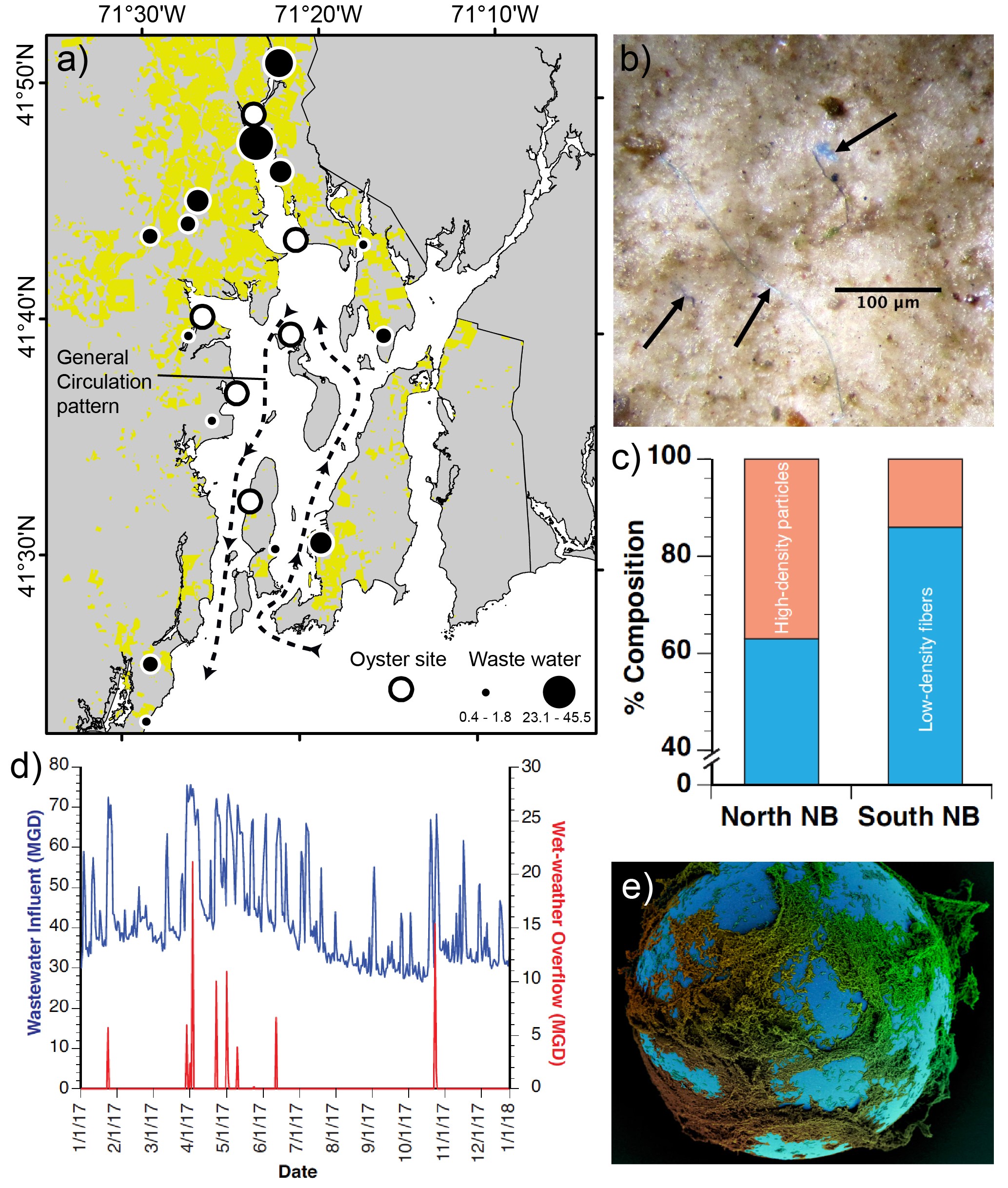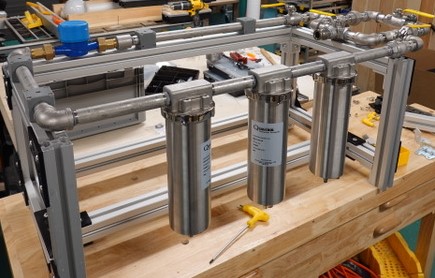Sampling plan

a) To test the environmental plastic load risk hypotheses, samples will be taken from six eastern oyster (Crassostrea virginica) populations along a N-S transect of Narragansett Bay, geographically scaling from the heavily urbanized Northern region towards the less urbanized southern region. Within each site, around 60 oysters will be collected (shell height 40-70 mm) along with 3 water samples through Niskin bottles or pumping. This sampling campaign will be conducted during the Spring wet season (Apr/May) and Fall dry season (Sept/Oct) of 2020. The yellow dots represent human population centers > 1000 people and the black circles represent wastewater treatment facilities (black circles, point size indicates average million gal d-1 discharge). Dashed arrow lines show major oceanographic circulation patterns. b) Examples of microplastics found in North Narragansett Bay during Winter 2018 (8L of surface water). c) Relative composition of plastic types of coastal seawater (8L filtered) from heavily-populated North NB and less-populated South NB. d) Seasonal data (2017) on sewage and storm water influent (MGD: million gal d-1; blue line) and wet-weather treatment line effluent (red line) during storm overload at Narragansett Bay Commission Wastewater Treatment Facility- Fields Point (B. Wenskowicz, NBC, unpub. data). e) Microplastic bead (blue) with surficial bacterial biofilm growth (Credit: Wyss Institute).

Pump system to be used for collecting water samples at each of the oyster sites. Each canister contains a filter of a different size for collecting microplastics. Pump design modifed from Lenz and Labrenz 2019. Photo credit: Andrew Davies.
Works Cited
Lenz, R.; Labrenz, M. Small Microplastic Sampling in Water: Development of an Encapsulated Filtration Device. Water 2018, 10, 1055.
